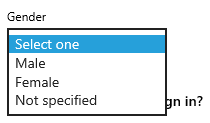10.10. Default Bias¶
One of the important parts of writing code, especially when it comes to user-facing screens, is default settings. Often it is left up to a team of developers to decide what the default settings of an application or program should be and in this, developers wield a lot of power, often unknowningly. People have an inherent preference for inaction and leaving things as they are. Not many individuals have the know-how, or the will to make minute changes to their computer program or mobile phone. Issues begin to arise when these default options reinforce gender, racial or other negative stereotypes.
10.10.1. When Default Becomes Standard¶
Let’s take iPhones and the default Siri voice. Siri has a feminine-sounding voice by default and while there are options to change this, very few people do. Words such as President and Secretary are already so strongly linked to men and women respectively, defaulting our friendly phone assistant to a feminine voice reinforces this gender bias - that women are always in service roles. There is a lot of power in choosing default settings that often goes unrecognized.
